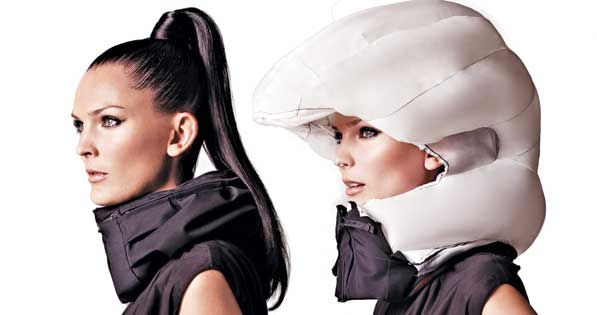
If helmets were invisible, would more cyclists wear them? For Swedish industrial-design students Anna Haupt and Terese Alstin, the answer—a resounding yes—became the basis of their co-authored master’s thesis. “We came up with a few concepts,” Haupt says, “but an airbag was the obvious choice because it dealt with all of the issues people had with helmets: they destroy your hair, they are difficult to carry or put in your bag, they are ugly.”
The product of their research, the Hövding, is made of nylon and worn around the neck like a scarf. In the event of an accident, a helium-filled airbag is deployed within a 10th of a second, wrapping the head in a hood-shaped cushion. The Hövding, which contains a cold-gas inflation tank and motion-monitoring sensors, runs on a cell phone battery and weighs about a pound and a half.
The development took seven years “and a lot of reverses,” Alstin says. “We had to study how cyclists move in a normal situation and reenact all known accidents in order to develop a method to distinguish between normal and abnormal cycling.” Whereas deployment algorithms for traditional airbags rely largely on measures of acceleration when a car is hit, algorithms developed for the Hövding also measure “the hit and angular adjustments on the actual body you are protecting,” Haupt explains.
Several thousand European cyclists are already wearing the Hövding, and the designers hope their invention will encourage more helmet-averse cyclists to ditch their cars and hop on a bike.

